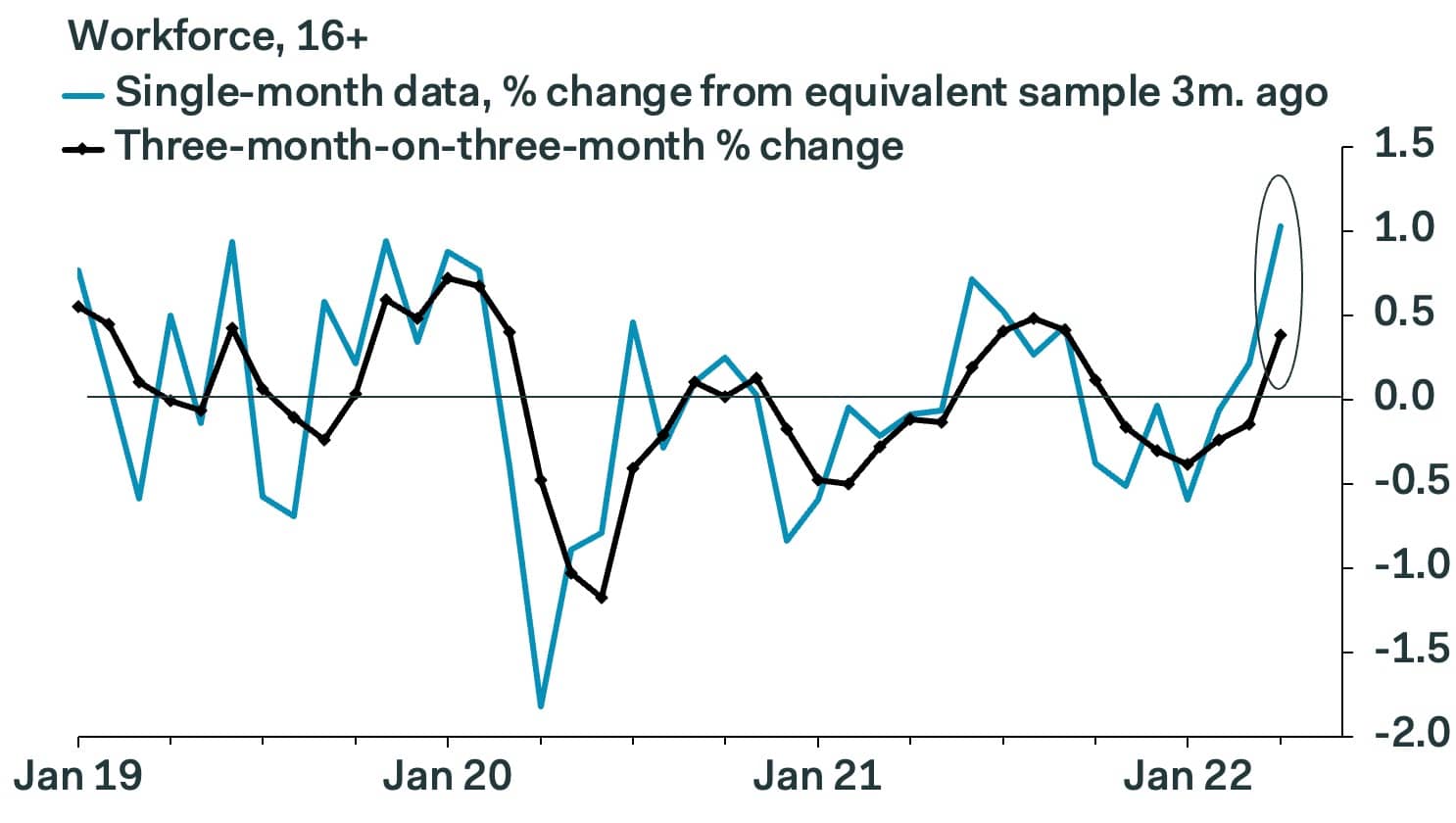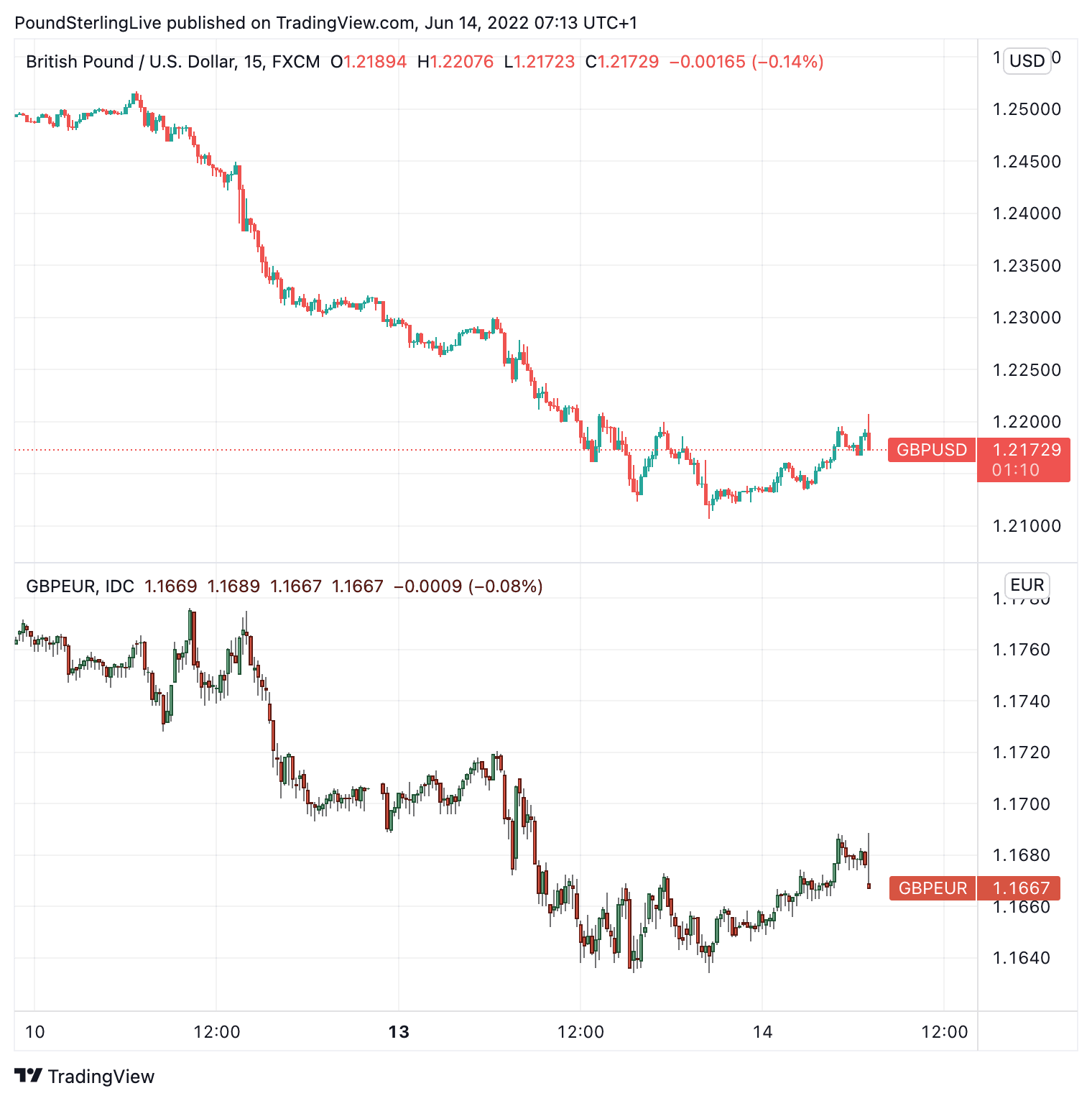Pound Sterling Remains Vulnerable to Market Turmoil and Slowing Labour Market Recovery
- Written by: Gary Howes
-
- GBP steadies
- Global market selloff eases
- UK labour market stats

Image © Adobe Stock
The British Pound remains vulnerable to further losses against the Euro and Dollar following the sharp losses of the past 24 hours, aided by a stabilisation in under-pressure global equity markets and new data showing the UK labour market recovery is slowing.
The majority of Sterling's losses against the Euro, Dollar, Franc and Yen over the past two trading days come in response to the significant 'risk off' move seen in global markets, linked to expectations for significant interest rate hikes at the U.S. Federal Reserve.
But the selloff in markets does appear to have eased at the time of writing Tuesday and any further recovery would aid the pro-cyclical Pound.
"Bonds and equities have both recovered after closing at the lows yesterday," says Adam Cole, Chief Currency Strategist at RBC Capital Markets.
"Labour market data in the UK is the main data release," adds Cole. "All available evidence suggests that the labour market remains very tight."
UK labour market data were mixed with 177K jobs being added in the three months to April says the ONS, more than the 105K increase the market was looking for. But the unemployment rate rose a touch to 3.8% in April from 3.7%, markets were anticipating 3.6%.
This suggests the labour pool might have increased as more people re-entered the labour market.
This is possibly viewed by the market as a positive as highlighted by the Pound reaction: GBP/EUR was steady after the release at 1.1675 and GBP/USD was seen up a third on the day at 1.2178.
"By far the most encouraging development in today's labour market figures is the rebound in the workforce. April's single-month figure was 1.0% higher than January's," says Samuel Tombs, Chief UK Economist at Pantheon Macroeconomics.
Above: UK participation, image courtesy of Pantheon Macroeconomics.
UK Average Weekly Earnings missed expectations coming in at 6.8%, against the market's expected 7.4%, and lower than March's 7%.
"Some positive developments in the UK labour market, as denoted by today’s release of April’s jobs report, have also stimulated minor GBP gains, but even the positive surprise in the net employment increase was undercut by an uptick in the unemployment rate from 3.7% to 3.8% and still weak real wage growth. This week’s data perfectly captures the UK macroeconomic backdrop of squeezed real household incomes, which is dragging people back into the labour market and reducing wage pressures at the margin, amid a stagnant growth backdrop," says Simon Harvey, Head of FX Analysis at Monex Europe.
Sandra Horsfield, economist at Investec, says the UK labour market is still going strong and this should encourage further interest rate hikes at the Bank of England.
"Given solid labour demand and hiring momentum, in the context of red-hot consumer price inflation, we see nothing in today’s numbers that is likely to prompt a change of course away from further tightening by the Bank of England on Thursday: our forecast remains for a 25bp rate hike to 1.25%," says Horsfield.
But it is not domestic data that matters for Sterling at present, rather it is the global backdrop: the Pound to Dollar exchange rate fell a sizeable 1.50% on Monday, which comes on top of the 1.40% decline suffered on Friday June 10. (Set your FX rate alert here).
The Pound to Euro exchange rate fell half a percent on Monday, a similar sized decline to that suffered on Friday.
The scale of losses in major U.S. stocks means the headline S&P500 is officially now in a bear market and further losses are likely.
This would typically be expected to support the U.S. Dollar which benefits when fear is in charge.
Further losses by the Pound against the Euro and Dollar could meanwhile be expected.
"For some time sterling has been a bellwether of risk appetite which, given the small, open nature of the economy and the prominence of the UK's financial sector, is understandable," says Thomas Flury, a Strategist at UBS' Chief Investment Office.
Above: GBP/USD (top) and GBP/EUR (bottom).
"US equities tumbled yesterday with S&P 500 down by 3.9%. Nasdaq fell by 4.7%. The S&P 500 has thus fallen by 21.3% YTD and thus entered a bear market," says Kyrre Aamdal, analyst at DNB Markets.
"The main reason seems to be a fear that the Fed will raise the policy rate much faster to unwind its stimulus policy, and a 75bp rise has been discussed in the markets," he explains.
Market fears of more-than-expected rate hikes from the Fed were ignited again on Friday when U.S. inflation for April surprised to the upside coming in at 8.6% year-on-year.
That was after the month-on-month pace of inflation rose from 0.3% to a whopping 1% in May.
Markets now see an increased likelihood that the Fed hikes by 75 basis points on Wednesday, meaning U.S. financial conditions tighten faster than expected.







